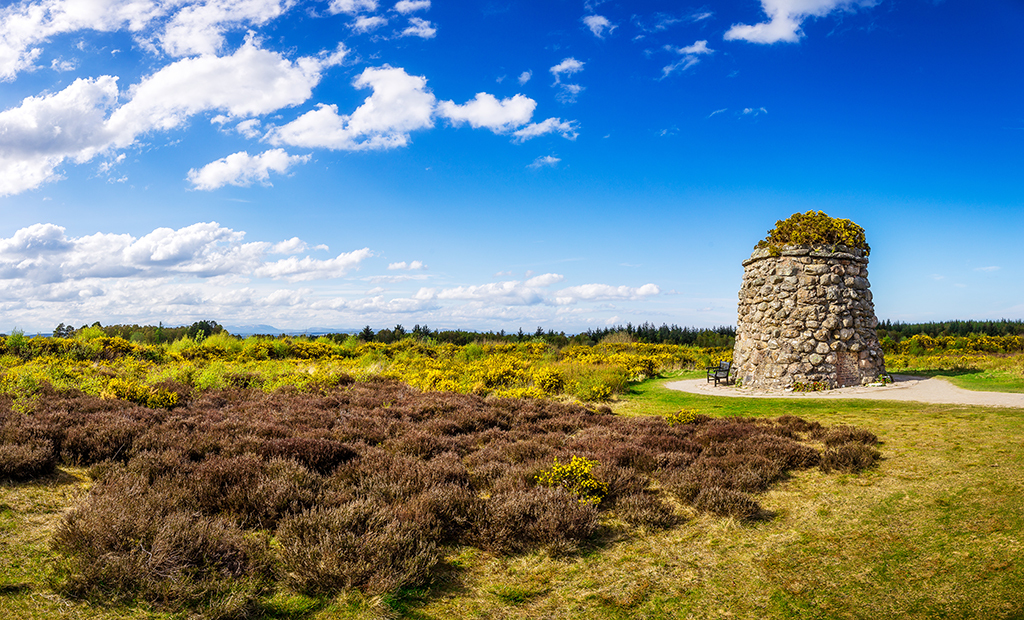The National Trust for Scotland is calling on politicians to support Culloden’s bid to become a recognised World Heritage Site and increase protection for Scotland’s historic battlefields.
Scotland’s national conservation charity has outlined proposals for battlefield locations in a in a new manifesto published ahead of the forthcoming Scottish Parliamentary Elections on May 6.
The manifesto calls on Scotland’s political parties to include battlefields in the forthcoming National Planning Framework 4, which maps out a long-term plan for national development and infrastructure, supporting sustainable and inclusive growth.
NPF4 will set out a clear and definite plan for Scotland until 2050 and the National Trust for Scotland is calling for battlefield landscapes to be afforded the same protections as other historic sites, such as Scheduled Monuments or listed buildings, protecting them from intrusive developments.
The Trust is also asking Members of Scottish Parliament to support Culloden’s application for UNESCO Word Heritage Site status, which comes on the 275th anniversary of the battle, which represented the Jacobite’s last stand, and the end of the Stuart dynasty’s claims to the British throne.
There are currently six recognised and protected UNESCO World Heritage Sites in Scotland, the Antonine Wall, the Heart of Neolithic Orkney, New Lanark, the Old and New Towns of Edinburgh, St Kilda and the Forth Bridge.
The 2021 manifesto reads: ‘Historic battlefields are hugely important for our sense of identity. They also provide us with space to remember and inform what we know about our past. However, they do not enjoy the same protections as other historic sites, such as Scheduled Monuments or listed buildings.

St Kilda
‘Enhanced protections for battlefields should be included in NPF4 to prevent development occurring which has a hugely adverse effect on the sites of historic battle and or the landscapes in which they are situated.’
Diarmid Hearns, head of public policy, risk and compliance at the National Trust for Scotland continued: ‘Historic battlefields are often extensive areas in multiple ownership, which can make them more challenging to conserve. We think introducing management plans for these important sites – as has been done in England and in other countries could be the way to secure them for the future.
‘In the case of Culloden, a largely intact battlefield and a turning point in Scottish history, it could also be deserving of the accolade of World Heritage Site status. This would bring additional protection and a more sustainable approach to the site’s development.’
Currently, historic battlefields are part of Scottish Planning Policy, and there is an expectation that planning authorities should protect and conserve their key landscape characteristics. However, these protections are weaker than those for altering Scheduled Monuments or for listed buildings. By introducing management plans for our historic battlefields, owners, developers and communities would have greater confidence in how the value of these sites would be safeguarded, supporting social, economic and environmental development.
Culloden has seen multiple planning applications for residential and holiday accommodation on the battlefield, which still contains the remains of many of those who fell that day on April 16 1746. Stone cairns mark the clans who fought in the battle and the site remains a place of pilgrimage for the Scottish diaspora today.
Raoul Curtis-Machen, operations manager at Culloden Battlefield continued: ‘Everyone wants to protect the cultural crown jewel that is Culloden Battlefield, but the existing planning mechanisms are too weak.
‘We averaged more than 300,000 visitors a year pre-covid, and we work hard keep the battlefield open and accessible 24/7. Yet we are frequently surrounded by planning applications for developments, and we struggle to defend against them all.
‘Once development takes place on or right beside the battlefield, the fragile but powerful sense of place is shattered. Surely there is a strong, clear case for stronger legal protection for sites like this?’
The National Trust for Scotland is calling on all parties to commit to signing the manifesto, which proposes ways in which government can ensure the sustainable use and enjoyment of Scotland’s heritage and landscapes with election pledges focused on planning, law, the economy and environment.

The memorial cairn at the battlefield of Culloden, near Inverness
The National Trust for Scotland cares for some of the country’s most significant heritage at more than 100 sites across the country, from houses, castles and properties, to landscapes recognised for their biodiversity and also battlefields, among them Bannockburn, Culloden and Glenshiel.
As part of Culloden’s 275th anniversary, the National Trust for Scotland undertook the Culloden 300 consultation, which aimed to establish how people wanted the battlefield to look in 2046 – three centuries on from the conflict.
The consultation highlighted the importance that the public, locally, nationally and internationally, place on the site of Culloden, with 3000 respondents showing strong support for its protection from the ongoing threat of piecemeal development.
Of the participants, 68% came from Scotland, showing a strong national concern for the future of the battlefield, with a significant response from the UK (11%) and the wider world (21%).
Almost 40% of respondents specifically highlighted the issue of development in the area of the battlefield, with many expressing concerns about its long-term impact.
The Culloden 300: Living With The Battlefield report is available HERE.
TAGS

